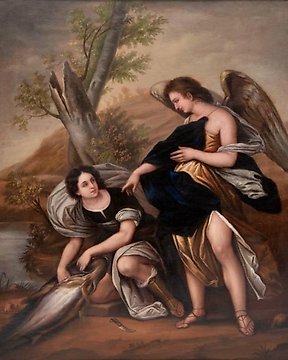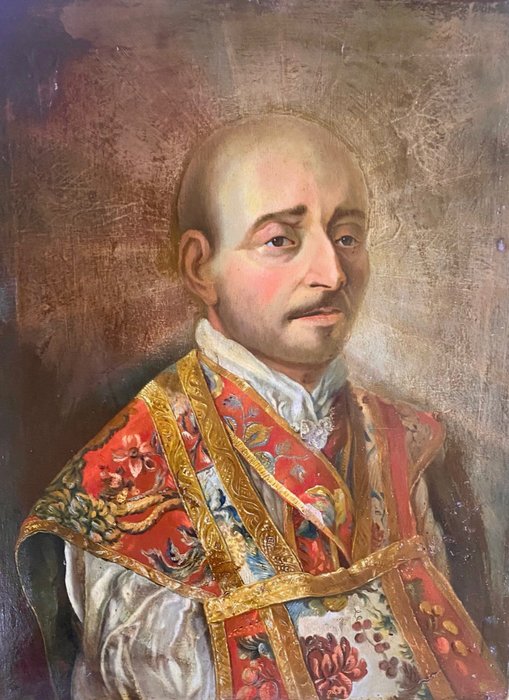
Scuola italiana (XVIII) - Tobia e l'arcangelo Raffaele
Nr. 80086579

Nr. 80086579

This painting depicts Ignatius of Loyola. ( 1491 - 1556 )
Saint Ignatius of Loyola, was a Spanish Catholic priest and theologian, who, with six companions, founded the religious order of the Society of Jesus (Jesuits), and became its first Superior General, in Paris in 1541.
You have many universities that use his name, especially in the US. Naturally, those institutions could be logical buyers.
Also, you have many other institutions and museums around the world that have the name Saint Loyola in their name.
A future buyer could donate the painting to one of the institutions mentioned above.
We don't know the artist of this painting, but a similar print exists in the National Portrait Gallery of London. ( also to our knowledge there should be a similar print in the collection of Prado Museum in Spain )
That print is done by Marco Alvise Pitteri
and is a line engraving, mid-18th century.
We have not found any other painting with the same face, expression, and clothes as depicted in the print.
In other words, the print in London most likely was done based on our painting here.
Giovanni Marco Pitteri (1703–1767) was an Italian engraver of the late Baroque period in his native Venice. He engraved densely incised portraits with shading of almost photographic quality.
He is said to have trained under Giovanni Antonio Faldoni and to have engraved in the style of Mellan.
He engraved a drawing of Saint Philip by Piazzetta, in whose studio he worked.
He had as one of his pupils Giovanni Domenico Lorenzi.
Naturally that brings us closer to who the artist might be.
He often copied the following painters, so we could expect our painting here to be done by one of them:
Federico Bencovich (1667 – 8 July 1753)
Jusepe de Ribera (1591 – 1652)
Giovanni Antonio Faldoni (24 April 1689 – c. 1770)
Giovanni Battista Piazzetta (February 13, 1682 or 1683 – April 28, 1754)
Maybe the last one is the most likely, as they worked together in the same atelier in Venice.
The monogram in the left-down ( if it is a monogram ) corner could look like his monogram.
Naturally, the painting could also be older and done by a painter who lived at the same time as Saint Loyola ( 1491 - 1556 ) The big difference in the color of the wood, below the paper compared to the wood exposed to light, shows considerable age.
A sample of the paper has been taken by an institute in Belgium for C14 analysis if wanted by the buyer.
We are still investigating the painting and a future buyer can continue this process naturally.
At the end, we uploaded 2 pictures of how the painting looked before the cleaning.
One of them is taken under UV 365 nm light and reveals dark overpaint to the right of the head to hide the glory. The other photo shows how the painting looked under normal light where no traces of the glory was visible.
As we could see the glory on the print in London, it was naturally not a surprise that the glory appeared after the cleaning.
There are many times in history when people wanted for safety reasons to hide that a painting was religious.
Considering the yellowness of the last layer of varnish, which appeared very old, we expect this retouche to have been done maybe around 1800.
This painting has for sure a story of its own which should be preserved for future generations.
So kaufen Sie auf Catawiki
1. Etwas Besonderes entdecken
2. Höchstgebot abgeben
3. Sichere Zahlung durchführen